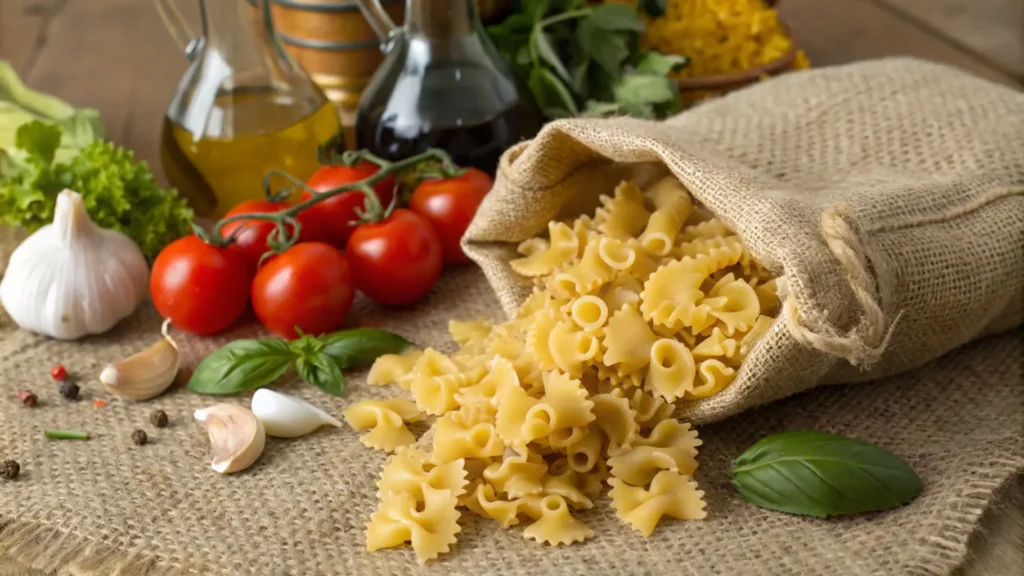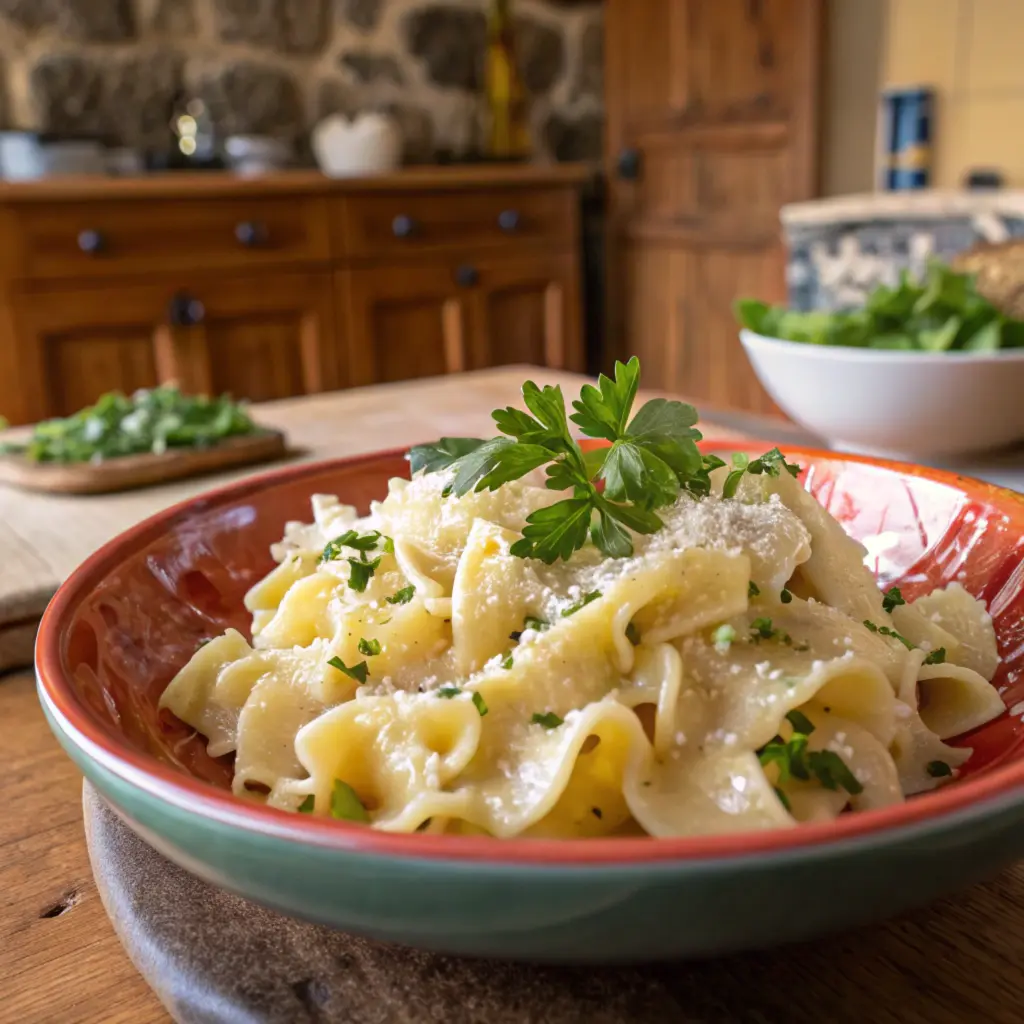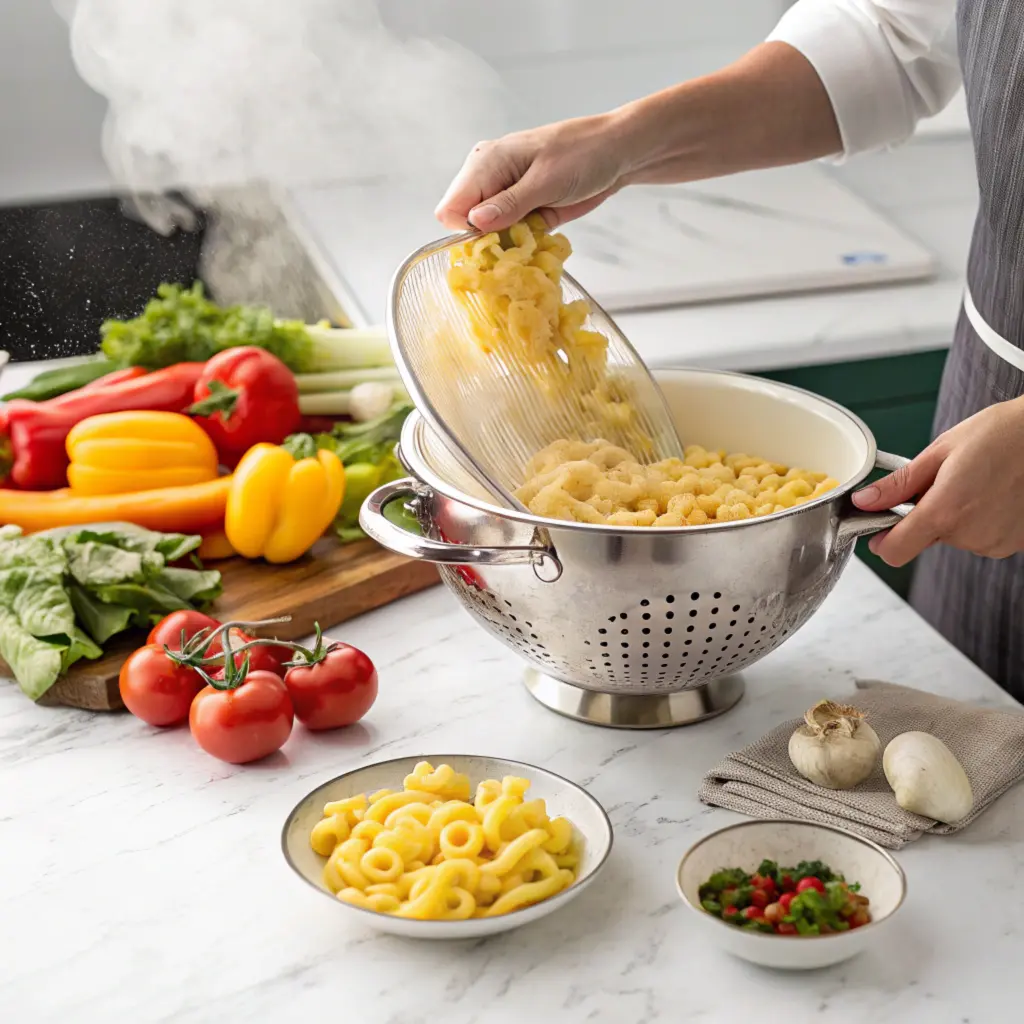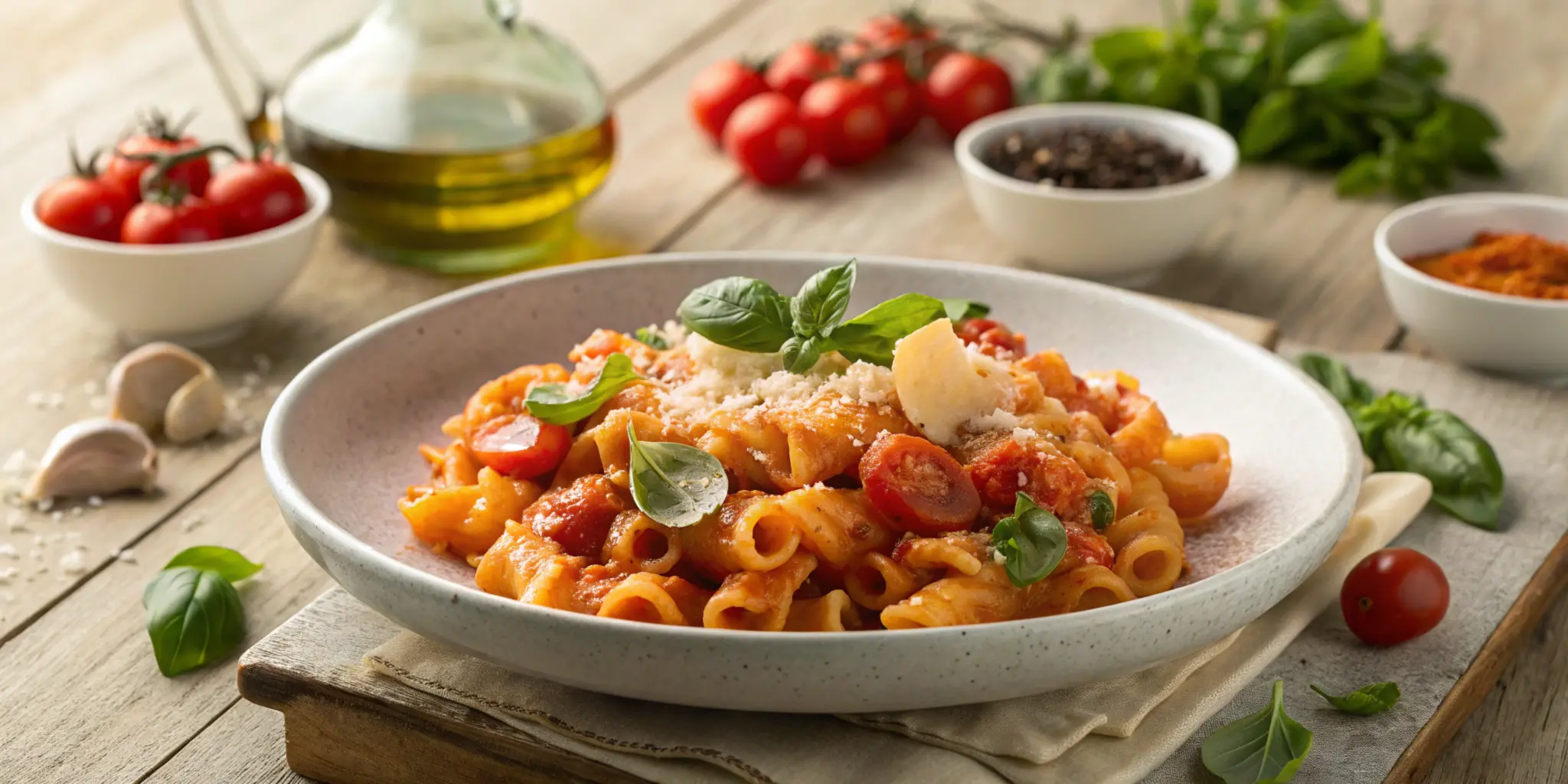Campanelle pasta, with its bell-shaped curls and ruffled edges, has captured the hearts of pasta lovers worldwide. Whether you’re curious about its history, wondering how it compares to other pasta shapes, or eager to whip up a delicious dish, this guide has got you covered. From cooking tips to recipe ideas, and even storage advice, you’ll find all you need to know about this charming pasta right here.
What is Campanelle Pasta?
Campanelle pasta is a type of Italian pasta known for its unique, bell-like shape. Translating to “little bells” in Italian, its name perfectly describes its curled edges and hollow center, making it perfect for holding sauces. It’s a versatile ingredient, often featured in creamy, tomato-based, or hearty meat sauces.
This pasta shape is not only delicious but also visually appealing, making it a favorite for both home cooks and gourmet chefs. Its texture, both chewy and satisfying, is perfect for creating memorable dishes.
The History and Origins of Campanelle Pasta
The roots of campanelle pasta are steeped in Italian culinary tradition. Originating in the heart of Italy, it reflects the country’s rich pasta-making heritage. The exact timeline of its creation is unclear, but its design suggests it was inspired by the decorative nature of Italian architecture and floral patterns.
While it’s now enjoyed globally, traditional recipes often celebrated regional ingredients like fresh tomatoes, garlic, and herbs. Over time, campanelle pasta has become a favorite for its ability to marry beautifully with a variety of sauces and flavors.
How Campanelle Pasta Got Its Name
The name campanelle comes from the Italian word for “little bells.” Its distinct shape, with fluted edges and a hollow center, mimics the appearance of a blooming flower or a small bell. This design isn’t just for looks—it also serves a practical purpose by capturing and holding onto sauces, ensuring every bite is full of flavor.
Symbolically, bells have held a special place in Italian culture, often representing joy, celebration, and harmony. It’s fitting that a pasta with such a delightful shape carries a name so rooted in tradition and festivity.
The ruffled edges and spiraled design were likely inspired by nature and the intricate details of Italian art. While simple in its ingredients, campanelle pasta showcases the creativity and craftsmanship that Italian cuisine is known for, making it as much a visual treat as a culinary one.

Why Choose Campanelle Pasta: Texture and Pairings
When it comes to pasta, campanelle stands out for its curly, bell-like texture and incredible versatility. Its fluted edges and hollow center aren’t just visually appealing—they’re functional, too. These features make it ideal for capturing and holding sauces, ensuring every forkful is packed with flavor.
The slightly chewy texture adds to its charm, making it a satisfying option for hearty meals. Its unique shape is especially suited to thicker sauces like a rich ragù, creamy Alfredo, or spicy arrabbiata. The grooves and folds hold onto the sauce, creating a harmonious bite every time.
For meat lovers, this pasta pairs beautifully with ground beef, Italian sausage, or tender chicken. Vegetarians can enjoy it alongside roasted zucchini, bell peppers, or mushrooms. A touch of pesto, sun-dried tomatoes, or ricotta cheese provides an additional burst of flavor.
This shape is also perfect for baked dishes. Its sturdy structure handles the oven well, making it a fantastic choice for casseroles layered with cheese and sauce. Even in pasta salads, its design offers a satisfying bite, blending seamlessly with fresh herbs, olives, and vinaigrettes.
Ultimately, this pasta variety is a favorite for those seeking meals that are both delicious and visually stunning. Whether crafting traditional Italian dishes or trying something new, its shape is a foundation for endless creativity in the kitchen.
Ideal Sauces and Pairings for Campanelle Pasta
| Sauce/Pairing | Why It Works with Campanelle | Examples |
|---|---|---|
| Creamy Sauces | The bell-like shape captures the thick sauce perfectly. | Alfredo, Mushroom Cream, Carbonara |
| Tomato-Based Sauces | The grooves cling to rich, tangy sauces for full flavor. | Marinara, Arrabbiata, Bolognese |
| Pesto and Herb Sauces | The pasta’s texture holds lighter, oil-based sauces effectively. | Basil Pesto, Lemon Herb, Garlic Oil |
| Roasted Vegetables | Complements hearty, flavorful veggies with ease. | Zucchini, Bell Peppers, Eggplant |
| Seafood Pairings | The hollow center pairs well with small seafood like shrimp. | Garlic Shrimp, Scallops, Crab |
| Cold Salad Additions | The sturdy structure holds up in chilled dishes. | Feta, Cherry Tomatoes, Olives |
Campanelle Pasta vs. Other Pasta Shapes: What Makes It Unique?
When comparing campanelle pasta to other well-known shapes like penne, farfalle, and rigatoni, its uniqueness truly shines. Each pasta has its strengths, but campanelle’s distinct design sets it apart both visually and functionally.
Comparison with Penne
Unlike the straight, tubular shape of penne, campanelle boasts fluted edges and a curled, bell-like form. This allows it to hold thicker sauces more effectively, whereas penne often lets lighter sauces slide off.
Comparison with Rigatoni
Rigatoni, with its ridged, cylindrical shape, also does a good job at capturing sauces but lacks the decorative appeal and playful texture of campanelle.
Comparison with Farfalle
Farfalle, or “bow-tie pasta,” offers a whimsical appearance, much like campanelle. However, farfalle’s flat, pinched center can sometimes lead to uneven cooking. In contrast, campanelle cooks evenly due to its consistent shape and thickness. It’s also sturdier, making it a better choice for baked dishes or casseroles.
Why Campanelle Stands Out
Usage is another key differentiator. While penne and rigatoni are often used in meat-heavy dishes or baked ziti, and farfalle is favored for pasta salads, campanelle is versatile enough to excel in both. It works beautifully with creamy, cheesy, and meaty sauces, and even shines in cold salads or soups.
Ultimately, the unique texture, shape, and versatility of campanelle pasta make it a standout choice. Whether you’re aiming for elegance or comfort, its ability to blend form and function ensures it’s always up to the task in the kitchen.
Creative Campanelle Pasta Recipes for Every Occasion
Campanelle pasta’s versatility makes it the perfect base for a variety of dishes, from comforting classics to modern twists. Whether you’re craving something traditional, vegetarian, or seafood-inspired, this pasta’s shape and texture will elevate your meal. Below are some recipe ideas, with step-by-step instructions for two standout dishes.
Traditional Italian: Campanelle with Creamy Tomato Sauce
Ingredients:
- 250g campanelle pasta
- 2 cups crushed tomatoes
- 1 cup heavy cream
- 2 cloves garlic, minced
- Olive oil, salt, and pepper
Instructions:
- Bring a pot of salted water to a boil and cook campanelle pasta until al dente.
- In a pan, heat olive oil and sauté minced garlic until fragrant.
- Add crushed tomatoes and simmer for 5 minutes.
- Stir in heavy cream and season with salt and pepper.
- Drain the pasta and mix it with the sauce. Garnish with fresh basil.
Seafood-Based: Garlic Shrimp Campanelle
Ingredients:
- 250g campanelle pasta
- 200g shrimp, peeled and deveined
- 2 cloves garlic, minced
- 1 cup white sauce (optional, for added creaminess)
- Olive oil, parsley, and lemon juice
Instructions:
- Cook campanelle pasta in boiling salted water until al dente.
- In a skillet, heat olive oil and sauté garlic until golden. Add shrimp and cook until pink.
- Toss the pasta with shrimp, parsley, and a squeeze of lemon juice. Serve immediately.
Vegetarian & Fusion Ideas
- Pesto campanelle with roasted vegetables.
- Cold campanelle pasta salad with olives, cherry tomatoes, and feta cheese.
- Campanelle stir-fry with soy-ginger sauce and tofu.

Tips for Cooking Campanelle Pasta Perfectly Every Time
Cooking campanelle pasta to perfection ensures your dishes taste just right.
How to Cook Al Dente
To achieve the ideal texture, boil the pasta in a large pot of salted water for 8–10 minutes or until it’s tender yet firm to the bite. Be sure to stir occasionally to prevent sticking.
Common Mistakes to Avoid
- Don’t overcook! Overdone pasta becomes mushy and loses its ability to hold sauces.
- Avoid undersalting the water—well-seasoned water enhances the pasta’s flavor.
Enhancing Flavor with Seasoning
Before draining the pasta, reserve a cup of the starchy water. It works wonders for thinning sauces and binding them to the pasta. Additionally, toss drained pasta with olive oil or butter to keep it from sticking and add extra flavor.

Nutritional Benefits
Campanelle pasta not only tastes delicious but also provides essential nutrients that make it a satisfying addition to a balanced diet. While it’s typically made from durum wheat semolina, it can also be found in whole grain or gluten-free varieties to suit various dietary needs.
For more information about how carbohydrates, fiber, and other nutrients support your health, visit Healthline for detailed guidance.
Nutritional Breakdown
A standard serving of campanelle pasta (about 2 ounces or 56g) contains approximately:
- 200 calories
- 7g of protein
- 1g of fat
- 42g of carbohydrates
- 2g of dietary fiber
It’s naturally low in fat and cholesterol, making it a heart-friendly choice when prepared with wholesome ingredients.
Health Benefits
When paired with nutrient-rich sauces and fresh vegetables, campanelle pasta becomes part of a well-rounded meal. Add roasted vegetables, lean proteins, or a simple olive oil-based dressing to boost fiber, antioxidants, and healthy fats. Whole-grain varieties provide even more fiber and B vitamins, supporting digestive health and energy levels.
While pasta should be enjoyed in moderation, its ability to be combined with fresh and healthy ingredients makes it a versatile and nourishing option for any meal.
Where to Buy Campanelle Pasta and Storage Tips
Best Places to Purchase
You can find campanelle pasta in most supermarkets in the pasta aisle, particularly in stores with a wide Italian or international selection. Specialty stores and Italian delis often carry high-quality brands, including imported options. For convenience, numerous online retailers also stock campanelle pasta, making it easy to have it delivered to your door. Look for reputable sites to ensure authenticity and quality.
Storage Tips
To maintain freshness, store uncooked pasta in an airtight container in a cool, dry place. If the original packaging isn’t resealable, transfer it to a jar or zip-lock bag. For cooked campanelle pasta, keep it refrigerated in a sealed container for up to 3–5 days. Toss it with a bit of olive oil before storing to prevent sticking.
Avoid exposing pasta to moisture or high temperatures, as these can affect its texture and shelf life. Proper storage ensures your pasta stays ready for any dish you plan to prepare!
Frequently Asked Questions
What dishes are best with campanelle pasta?
Campanelle pasta is ideal for hearty dishes like ragù, creamy Alfredo, and pesto-based recipes. It also works wonderfully in pasta salads, baked casseroles, or soups due to its ability to hold onto sauces and flavors.
What is a good substitute for campanelle pasta?
If you can’t find campanelle pasta, suitable substitutes include fusilli, farfalle, or even penne. These shapes also have grooves or surfaces that help capture sauces, making them great alternatives.
If you’re out of campanelle pasta and need a quick alternative, discover the 10 best substitutes for campanelle pasta in our comprehensive guide: 10 Best Substitutes for Campanelle Pasta.
How to cook campanelle pasta?
To cook campanelle pasta, boil it in a pot of heavily salted water for 8–10 minutes until it reaches an al dente texture. Stir occasionally to prevent sticking.
What is campanelle pasta?
Campanelle is a bell-shaped pasta with fluted edges and a hollow center. Its name translates to “little bells” in Italian, reflecting its unique design and versatility in a variety of dishes.
To learn more about campanelle pasta, including its history, culinary uses, and expert tips, check out our comprehensive guide here: What Is Campanelle Pasta? History, Uses, and Tips.
How long to cook fresh campanelle pasta?
Fresh campanelle pasta cooks faster than dried versions, typically in 3–5 minutes. Keep an eye on it to ensure it doesn’t overcook and lose its texture.
For a detailed breakdown of how long to cook fresh campanelle pasta, including step-by-step instructions and helpful tips, check out our complete guide here: How Long to Cook Fresh Campanelle Pasta.
What is the difference between gigli and campanelle?
While both gigli and campanelle pasta are similar in shape, gigli is often more floral-like with a narrower base, while campanelle has a more defined bell structure and fluted edges. Both are excellent for capturing sauces but may vary slightly in texture.
If you’re curious about the differences between gigli and campanelle pasta, including their unique uses and best cooking tips, explore our in-depth comparison here: Gigli vs. Campanelle: Key Differences, Uses, and Tips.
Conclusion
This bell-shaped delicacy is more than just another pasta—it’s a culinary treasure that enhances every dish it graces. Its charming design, rich Italian roots, and versatility make it a staple in kitchens worldwide. Whether paired with hearty sauces, fresh vegetables, or enjoyed in a cold salad, this unique shape offers a delightful balance of texture and flavor in every bite.
By learning about its history, perfecting your cooking techniques, and experimenting with creative recipes, you can bring a touch of authentic Italian flair to your meals. Whether you’re a seasoned pasta enthusiast or just starting your journey, this shape is truly worth savoring.
Stock up on this delightful pasta, follow the tips and recipes provided, and enjoy the endless possibilities it offers. Every meal featuring this ingredient becomes a celebration of taste and tradition!

